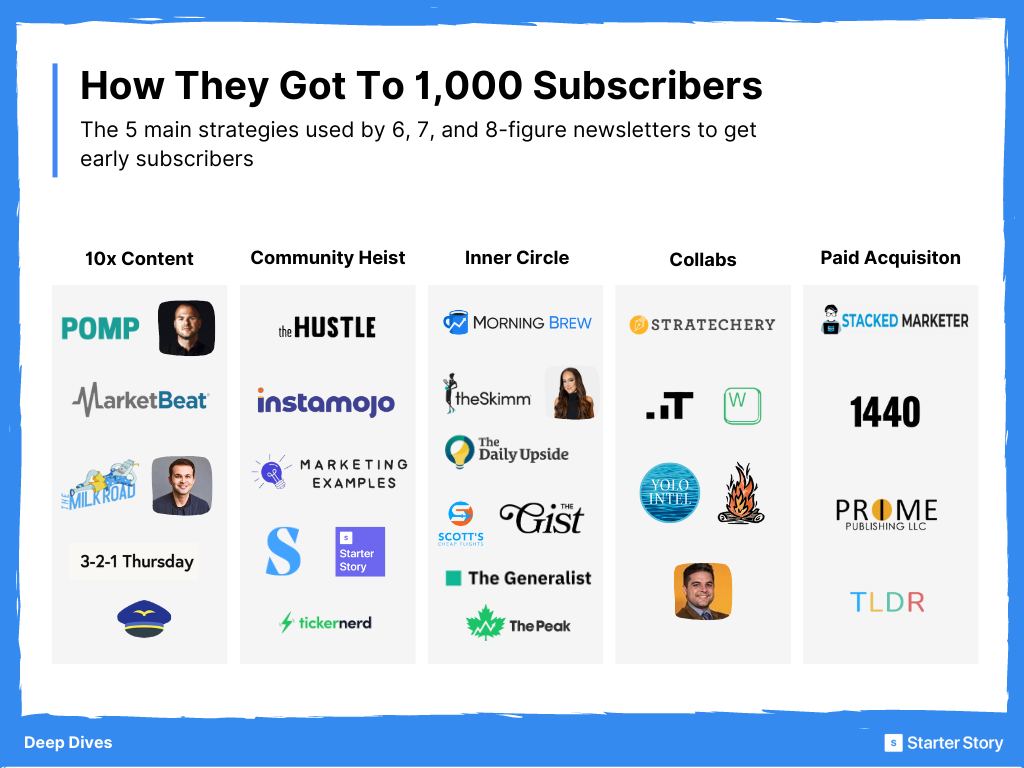How The Biggest Newsletters Got Their First 1,000 Subscribers
Newsletters are one of the most powerful ways to reach an audience, but how do newsletters get their first 1,000 subscribers?
In this case study, we analyzed over 50 successful 6 and 7-figure newsletters. We uncovered the 5 main strategies newsletters use to get to that sweet number: 1,000 subscribers.
Each strategy, data point, and growth method in this case study is backed up by real-world interviews with founders.


Download the report and join our email newsletter packed with business ideas and money-making opportunities, backed by real-life case studies.

Download the report and join our email newsletter packed with business ideas and money-making opportunities, backed by real-life case studies.

Download the report and join our email newsletter packed with business ideas and money-making opportunities, backed by real-life case studies.

Download the report and join our email newsletter packed with business ideas and money-making opportunities, backed by real-life case studies.

Download the report and join our email newsletter packed with business ideas and money-making opportunities, backed by real-life case studies.

Download the report and join our email newsletter packed with business ideas and money-making opportunities, backed by real-life case studies.

Download the report and join our email newsletter packed with business ideas and money-making opportunities, backed by real-life case studies.

Download the report and join our email newsletter packed with business ideas and money-making opportunities, backed by real-life case studies.







